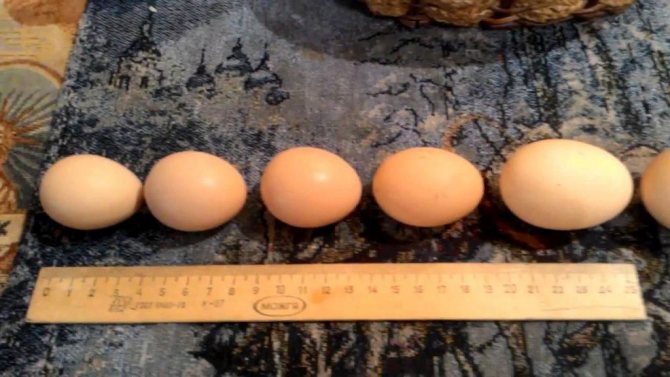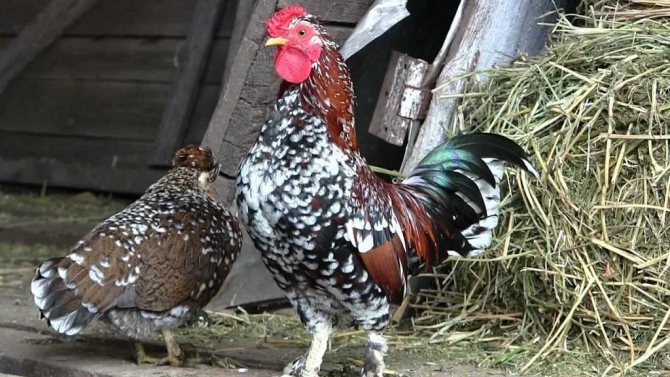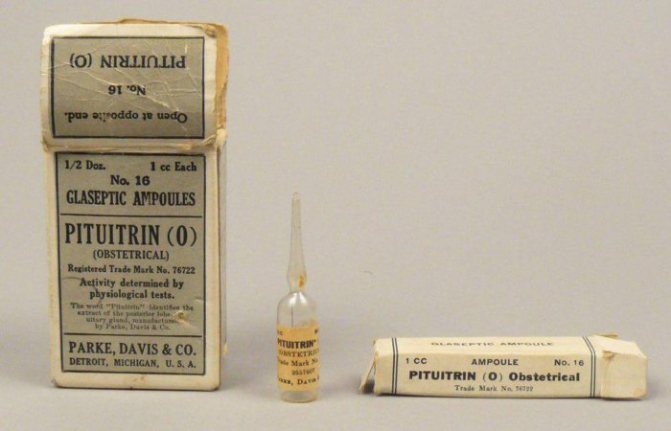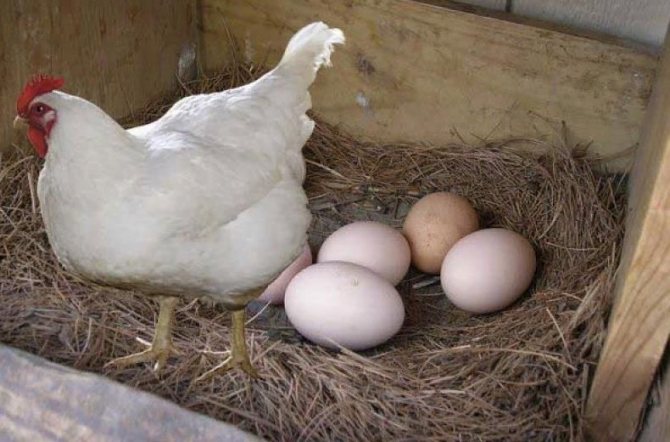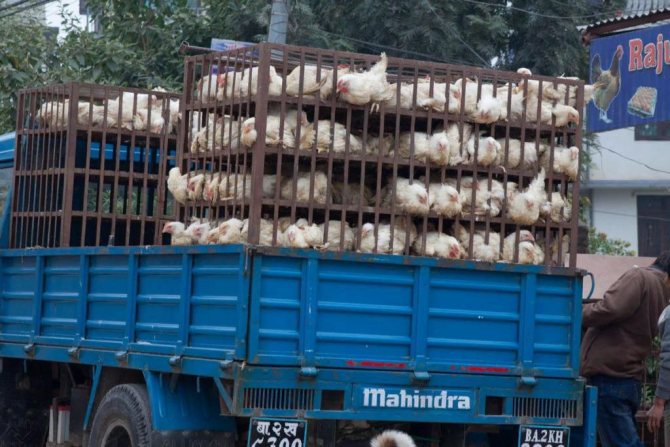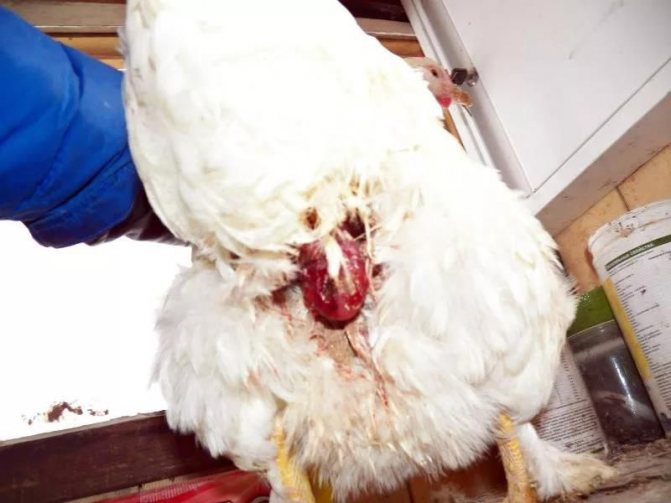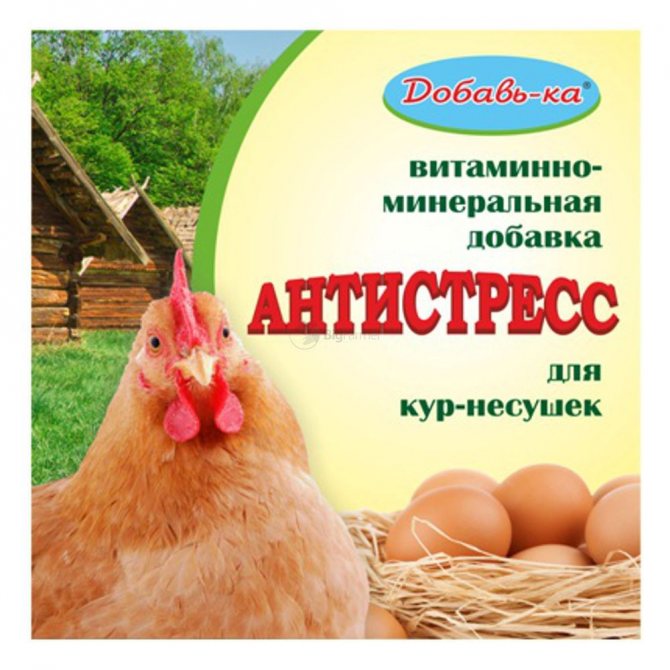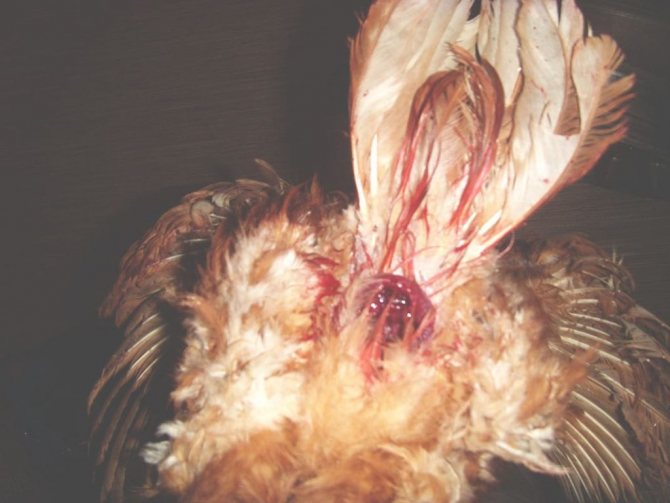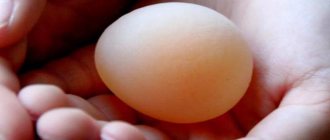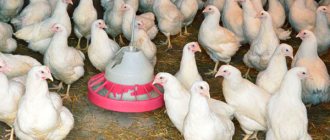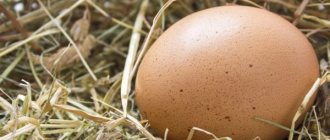Why chickens lay small eggs is a question that worries many poultry farmers, despite the fact that raising chickens is not particularly difficult. Some farmers have to deal with the problem of the appearance of eggs that are too small - the average weight of a chicken egg is usually 55-65 grams, but sometimes this figure is halved.
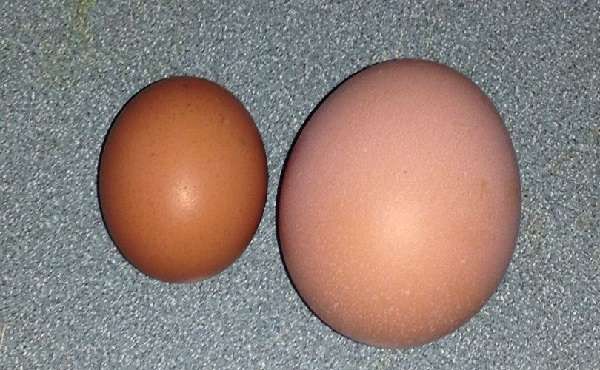
Why chickens lay small eggs
General description of the problem
The low weight of chicken eggs is a phenomenon that can be both episodic and regular. In the first case, there is no cause for concern. But if small eggs began to appear day after day for a long period, this indicates the presence of certain problems or features of the life cycle of layers.
Small eggs are a common pathology of oviposition. Small, or dwarf, chicken eggs are those whose weight does not exceed 35 g. Most often, such a deviation is observed in spring and summer.


In small eggs, the yolk may be underdeveloped or absent altogether. If there is no center, then an extraneous inclusion is found in its place - a blood clot, pieces of hardened protein, fibrin.
Most of the crushed chicken eggs are round in shape. Their protein is high in density.
By the look of the eggs, the health of the chickens is judged. If the laying hens do not get sick and develop fully, then their eggs have the correct shape, standard size and weight.
With a stable decrease in the size of eggs, it is necessary to find out the reasons that caused this phenomenon. A veterinarian can help with this.
Hormonal disbalance
Another possible reason for a decrease in the size of eggs in a chicken is hormonal imbalance. Fortunately, it does not occur very often. As in the case of a foreign body, in addition to changing the size of the eggs, they may also be missing yolk, although this indicator is not required. Moreover, in such cases, the chicken, on the contrary, can lay eggs with two or more yolks (chicks usually do not hatch from them). Another symptom of hormonal imbalance is eggshells.
It will not be possible to independently establish a diagnosis in this case, serious tests are needed, especially since for correct treatment it is necessary to clearly establish which hormones are produced by the body in insufficient or, conversely, in excess, and on this basis prescribe treatment.
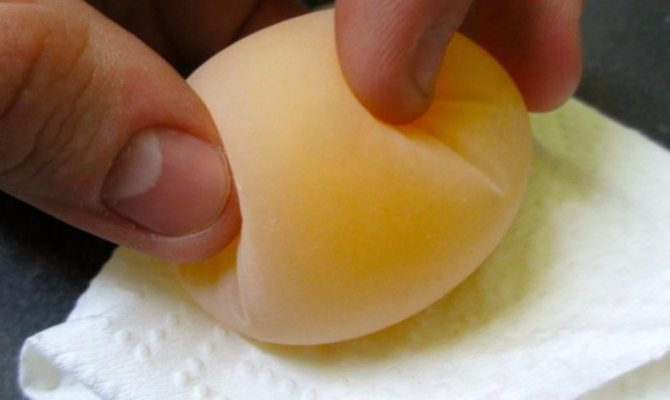

The main causes of egg shrinkage in hens
The main reasons that can cause the eggs to shrink in chickens include the following:
Bird age
The size of the eggs is proportional to the age of the laying hen: the younger she is, the smaller her eggs. Young individuals lay frequently, but eggs are small. As the hens mature, the weight and size of the eggs increase.
Throughout its life, a chicken is capable of laying from 2,000 to 4,000 eggs - it all depends on its breed and state of health. In the first months after the bird reaches puberty, the eggs may be small. This phenomenon is natural: during this period, a full-fledged yolk is placed inside, and the protein layer is small.
The size of the egg increases over time as the oviduct gets longer and widens. The final product may be small until the bird is 9 months old.
Why pullet chickens lay small eggs and when they start producing eggs of standard sizes, this video tells:
End of the biological cycle of productivity
In laying hens, the life cycle consists of lay periods, each of which ends in molt. When a hen is producing several small eggs, this indicates the cessation of oviposition and an early start to molt. After this period is over, the hen will start producing eggs of the standard size again.
Features of the breed
Certain representatives of egg-bearing breeds of chickens are naturally small in size and body weight, therefore, only small eggs are produced throughout their life.
So, in a white sultan, the average weight of an egg is 45 g, in a Hamburg chicken - from 45 to 54 g; accordingly, and their size will be small. In dwarf varieties of chickens, the egg sizes are even smaller: in the bantam - within 37-40 g, in the millefleur - 28-30 g.
Large eggs are laid by representatives of the following breeds:
- Pushkin. These hens lay eggs, the weight of each of which is about 60 g. Distinctive features of layers of this breed - easy adaptation to different conditions of detention.
- Hisex Brown. These birds have a high level of egg production - about 315 products per year. The eggs are large: the weight of one piece reaches 70 g.
- Tetra. Representatives of this breed are especially demanding on the conditions of detention: they need a strictly defined temperature regime and balanced nutrition. But their egg production is also impressive: Tetra chickens give more than three hundred eggs a year, the weight of one egg is about 65 g.
- Russians are white. Representatives of this breed lay eggs weighing 60 g each.
- Highlines. Layers of this breed are productive. The average weight of one egg is about 65 g or more.
- Orlovsky. Laying hens give eggs weighing 60 g.
- Rhodonites. The average size of one egg is 60 g.
Foreign bodies in the oviduct of a laying hen
A feather, stone, helminth, litter elements can act as a foreign object. When a foreign body passes through the oviduct, it is perceived by the chicken in the same way as a formed yolk.
In the future, a foreign object is enveloped in a protein layer, a shell forms on top. The output is a non-standard egg (pseudo-egg) with a small size.
Problems with feeding and keeping birds
Inadequate nutrition and the associated lack of vitamins E and D in the body can directly affect the size of the eggs. Their decrease can be provoked by the presence of drafts, lack of light or heat, increased dryness and stuffiness of the air in the room in which the birds are kept.
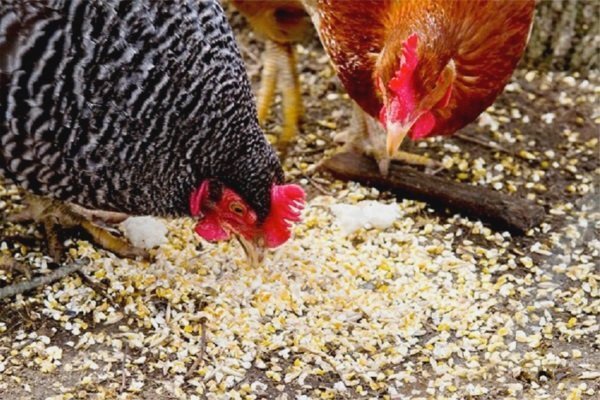

Read more about feeding laying hens here.
Hormonal disorders or metabolic problems
With deviations of this nature, eggs without yolk are formed, which affects its weight and size. A change in the hormonal background or metabolism can be caused by a sharp change in the composition of the feed, starvation, the presence of external stimuli in the form of noise, drafts.
Signs of this condition in chickens are baldness, brittle feathers, weight problems (both obesity and sudden weight loss), gait disturbances, lethargy or excessive excitability of the bird.
Diseases of chickens
The most common bird disease that causes egg size to shrink is salpingitis (or inflammation of the oviduct) in layers. Most often, the pathological process develops in young chickens. With such a disease, the eggs first decrease in size, then the process of laying them stops altogether.
In the acute form of salpingitis in laying hens, the number of eggs decreases, their size decreases. In the chronic form of the disease, there is no depletion of the bird, no deterioration in its condition. The only thing that changes is the size of the eggs and the deterioration of the egg-laying.
Stress
Often, chickens, getting to a new breeder, stop laying eggs or lay them, but give small products. In this case, do not panic: the bird will need from several days to a week in order to adapt to new habitat conditions. During this period, it is important to provide the bird with adequate nutrition and favorable living conditions.
What to do
In order to make it easier to cope with the disease, it is necessary to correctly determine the cause. If the problem is only in nutrition - just add the necessary substances to the diet, if the cause is illness - show the veterinarian and start treatment immediately.
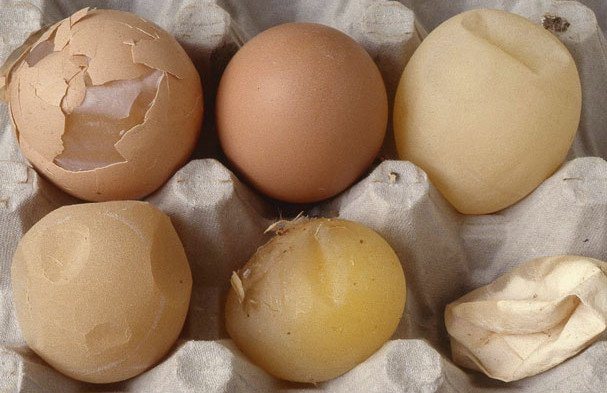

Proper nutrition
In order to enrich the chicken diet with calcium, it is necessary to add to it:
- a piece of chalk;
- shell of eggs;
- slaked limestone;
- wood ash;
- bone meal;
- shell rock.
These products do not need to be added directly to food.
We recommend that you learn how to prepare your own food for laying hens.
It is enough just to scatter them in a certain place in the chicken coop and the family will peck fortified supplements as needed.
Phosphorus can be added with the following foods:
- bone meal (at least 1 g per 1 hen per day);
- bran grains;
- vegetable oil;
- sunflower cake.
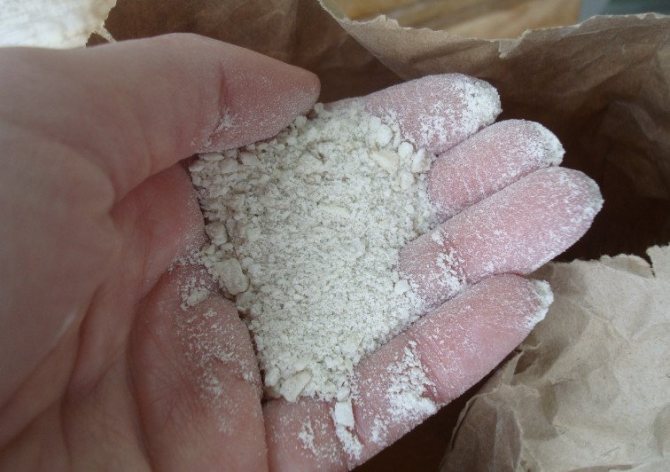

Bone meal will help fill the phosphorus deficiency in the diet. Sodium is found in table salt (add half a gram directly to food for 1 bird). The rest of the micronutrients can be obtained from cereals and green feed. Did you know? In most countries of the world, a monument to a chicken egg has been erected.
Treatment
Infectious bronchitis - an acute viral disease that affects the respiratory system, as well as the kidneys and reproductive organs. The disease is transmitted through contact with affected objects (food, droppings, water). The incubation period is 3-5 days.
Other symptoms (besides thin shells) are:
- depressed state;
- coughing and wheezing.
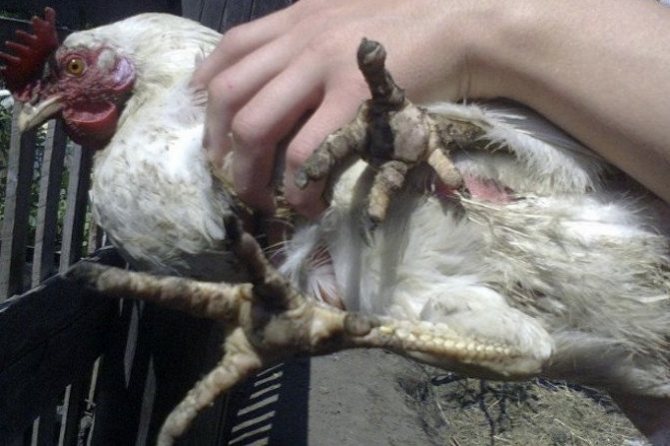

For the treatment of bronchitis, only antibiotics are used, such as browaf, but only a veterinarian can diagnose and prescribe the necessary drug.
Learn about the causes and treatments for infectious bronchitis in chickens.
Bird flu - an acute dangerous disease, which is characterized by the fact that several life-threatening viruses develop in the bird's body at once. Only a specialist can make an accurate diagnosis.
Other symptoms of bird flu:
- deterioration of feathers;
- loss of coordination;
- temperature increase;
- refusal to eat;
- thirst;
- swelling.
Today, bird flu is incurable. In case of infection, the chickens are killed and disposed of.
Ways to deal with the problem
If the laying hens began to produce small eggs, it is necessary to find out the reason for this phenomenon and, in accordance with this, choose a way to improve the situation.
The first thing to do is contact your veterinarian to rule out the likelihood of inflammatory and other diseases in layers. If the birds have an inflammatory process of the oviduct, it is necessary to wash it daily with clean water and give the hens a solution of potassium iodide for 20 days. Also, sick layers are given vitamin complexes, which must include vitamins A, E and D.
If a young laying hen lays small eggs, then you need to wait until she is 6 months old. Usually by this age, chickens begin to lay eggs of standard sizes and weights.
To solve the problem of small eggs, you need to adhere to the following recommendations:
- Isolate sick birds from the flock promptly.
- In case of inflammation of the oviduct in layers, rinse it with saline, injecting it through an enema. In case of an inflammatory process, it is necessary to give the birds Sulfadimezin and Trichopolum: the tablets are crushed, diluted with water and poured into the beak of the layers.If the disease was provoked by pathogenic bacteria, then calcium gluconate, Baytril, Gamavit are additionally prescribed.
- Provide the full duration of daylight hours in the hen house, which is necessary for chickens to lay eggs (15-16 hours a day).
- Feed the hens with grass, herbs.
- Introduce vitamin C into the diet, which helps birds under stress conditions.
- Provide good ventilation in the area where birds live.
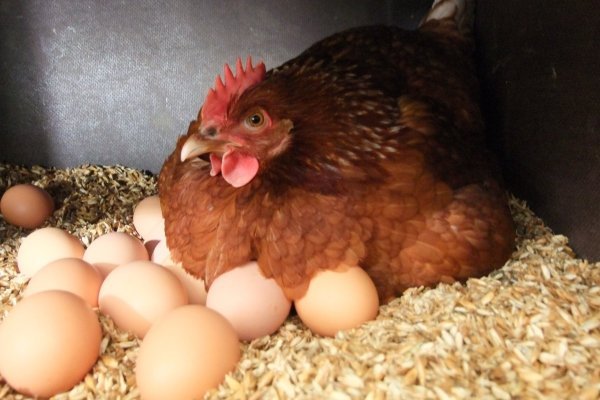

Thin shell
As the human skin shows the state of the human body, so in the chicken, the egg is a similar "indicator". This product is capable of displaying the level of vitamins and minerals in the hen's body, as well as the living level of the laying hen. Healthy birds that are kept in good conditions will always have excellent raw materials.
Thin shells are a serious problem when the hen begins to lay strange, sometimes soft or too translucent eggs that have a very short shelf life.
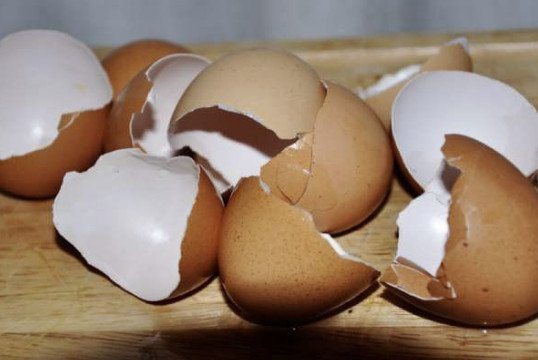

However, you should not panic, the reasons for this phenomenon are quite specific, and the solutions are extremely simple.
Preventive actions
In order to prevent abnormalities in the process of egg formation, you must follow these recommendations:
- Organize the diet correctly. Layer feed should contain all the necessary vitamins and minerals, but at the same time, it should not be too high in calories. To get large eggs, you need to include in the diet formulas that contain fat, crude protein, lysine, cystine.
- Closely observe the condition of the birds in order to detect the onset of diseases that cause a violation of oviposition in time.
- Provide adequate lighting, especially in the winter season, when the egg production of layers is significantly reduced.
- Maintain optimal temperature conditions. In winter, the temperature in the hen house should not fall below +12 degrees, in summer it should not exceed +22 degrees.
- Destroy insects and ticks, eggs and larvae of helminths, harmful rodents in the room where the birds are kept.
- Provide chickens with adequate walking space and comfortable perches for sleeping at night.
- Clean and disinfect ancillary facilities adjacent to the poultry house, sewage sump, roads.
- Change the litter regularly.
- Timely carry out preventive treatment of poultry to prevent helminthic invasions.
- Maintain the required air humidity in the chicken coop. This indicator should be in the range of 60-70%.
- Observe sanitary and hygienic standards, ensure cleanliness and dryness in the room where the laying hens are kept.
- Complete disinfection of the premises on a regular basis - at least once every 2 months.
Periodically, it is required to improve the premises in which the laying hens are kept. The main stages of this kind of activities include the following:
- Removing poultry from poultry houses and performing mechanical cleaning of premises. Feeders and bunkers are cleaned of feed residues, dust is deposited. Manure and bedding material are removed for biothermal treatment. Lamps, control panels and other equipment are treated with phenol solution (5%).
- Cleaning of adjacent territories, mowing of grass.
- Washing house equipment. All contaminated surfaces and equipment installed in the chicken coop are treated with a solution of soda ash, kept for an hour, then washed with plain water using high-pressure pumps.
- Wet disinfection of premises and equipment.
The outer walls of the house are whitewashed once a year, in warm weather.
Inflammation of the oviduct
This disease is called salpingitis, and although it is dangerous for all breeds of chickens, egg-laying hens are especially affected by this disease.
Important! Salpingitis is caused by a bacterium of the genus Staphylococcus. The disease is very dangerous for poultry.If you do not take measures, you can lose all the livestock, so contacting a veterinarian is mandatory: an accurate diagnosis will help to establish a blood test of a sick individual.
The third reason is laying eggs in too young (above we mentioned that it is very dangerous to stimulate egg production in immature hens) or just very large eggs that the hen cannot "squeeze out", which leads to rupture of the oviduct. Another disease, for example, inflammation of the cloaca or some kind of infection, can also provoke the disease.
Did you know? Birds are much more sensitive to light than animals. A nerve impulse from the eyes is transmitted to the part of the brain that stimulates certain sex hormones. Thus, by artificially adjusting the length of daylight hours, you can both increase and decrease egg production.
Find out what to do if your chickens become difficult to lay.
Chicken egg size marking
In stores, egg trays are labeled to indicate their weight:
- the number 3 after the main indication ("C" - table or "D" - dietary egg) means that the eggs belong to the third category, since their weight is small - from 33 to 44.5 g;
- 2 - second category, egg weight - 45-54.5 g;
- 1 - the first category, egg weight - from 55 to 64.5 g;
- the designation "B" assigns eggs to the highest category - this means that the weight of one is more than 75 g;
- the designation "O" refers the products to the selected group: the weight of one egg in this case ranges from 65 to 74.5 g.
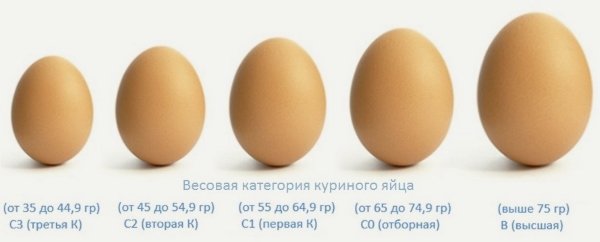

Chickens can lay small eggs for various reasons: this may be due to the characteristics of the breed and age, as well as due to improper housing conditions and diseases. If the phenomenon is episodic, then you can wait a while and monitor the state of the chicken - perhaps this is due to its young age. If small eggs are laid regularly, contact your veterinarian.
0
Recipes
There are many mixed feeds, the recipes for which are written on the packaging. Many breeders decide to prepare their own feed in proper proportions to ensure that the feed contains only organic matter.
Recipe 1
The most common recipe is the following (1 kg serving):
| wheat | 625 g |
| sunflower meal | 175 g |
| limestone flour | 75 g |
| meat and bone meal | 40 g |
| feed yeast | 25 g |
| sunflower oil | 23 g |
| baking soda | 7 g |
| salt | 10 g |
| mineral and vitamin supplements | 20 g |
For cooking, it is necessary to mix all the ingredients and feed the chicken family with them daily.
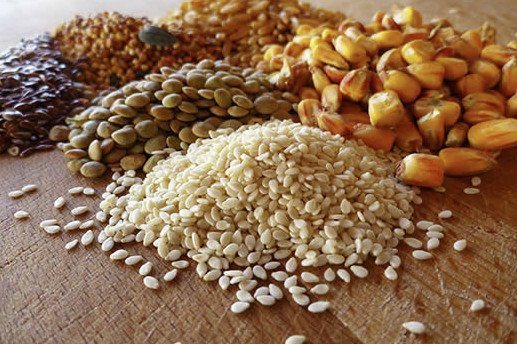

Recipe 2
Another popular recipe for laying hens is cereal-based compound feed (1 kg portion):
| corn | 450 g |
| wheat | 120 g |
| barley | 120 g |
| peas | 70 g |
| sunflower meal | 70 g |
| herbal flour | 20 g |
| salt | 1.5 g |
| vitamins, minerals or premix additive | 150 g |
Important! Considering the presence of table salt in the recipe, the amount of which is calculated for each layer separately, it can be added last just before the "distribution" of food.
So, if laying hens began to lay "strange eggs", this may be the result of climatic intolerance, acclimatization, health problems, lack of vitamins. In most cases, it is quite simple to remedy the situation, but it is better to avoid unsuitable weather conditions, vitamin deficiencies, and also take all preventive measures in time. Then the chicken family will always be great.
Prophylaxis
If we leave aside questions related to age and breed, in order to prevent abnormal grinding of eggs in layers, it is enough to observe following conditions:
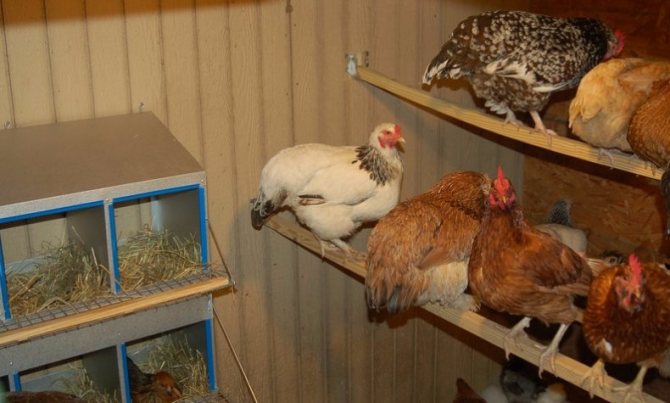

Important! It has been noticed that if there is a fight or just a commotion in the hen house, a slight decrease in the intensity of lighting can calm the bird (it has also been noted that blue lamps have a certain "sedative" effect). On the other hand, it must be borne in mind that in nature, day does not suddenly change to night, so you need to try to avoid abrupt switching off and even more on the light - this can cause stress in the laying hens, and what it is fraught with, we said above.
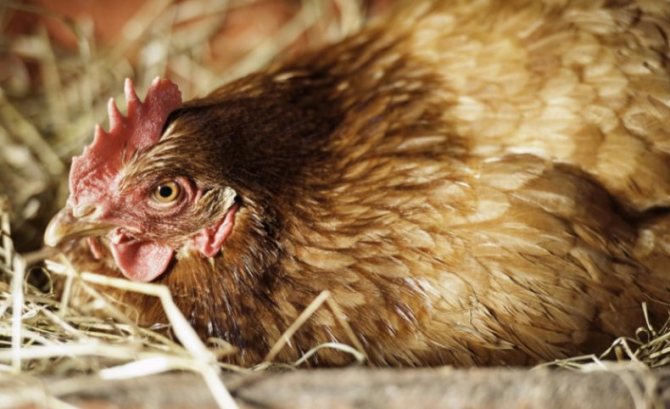

Let's summarize.If an adult and healthy-looking chicken has laid a very small egg for no reason, this is not a reason to sound the alarm, but it is still worth taking a closer look at such a hen. But if such cases continue, you definitely need to figure out why this is happening.
However, most of the causes of this problem can be eliminated by themselves if you establish proper conditions (temperature, lighting, hygiene) in your poultry house and provide the layers with a balanced diet.
Inflammation of the oviduct
This disease is called salpingitis, and although it is dangerous for all breeds of chickens, egg-laying hens are especially affected by this disease.
The third reason is laying eggs in too young (above we mentioned that it is very dangerous to stimulate egg production in immature hens) or just very large eggs that the hen cannot "squeeze out", which leads to rupture of the oviduct. Another disease, for example, inflammation of the cloaca or some kind of infection, can also provoke the disease.
Eggs without yolk
Chicken eggs without yolk do occur, but not so often. They do not go on sale, so many simply do not know about the existence of such an anomaly in the structure of the egg. It can appear when the yolk falls into the abdominal cavity of the chicken, and a clot of protein at this time is enveloped in a shell. Such eggs can always be recognized by their appearance: they are distinguished by their extremely small size.
This situation is a sign of hormonal disorders in the laying hen. They can be caused by stress, poor housing, as well as unbalanced feeding and overcrowding of birds.
There are situations when the yolk in the egg bursts and mixes evenly with the protein. In this case, the yolk is not visible, but this is not considered a pathology, unlike the first case. Naturally, such eggs also become unsuitable for incubation. However, they can be safely eaten, they will not bring any harm to the body.
Prophylaxis
If we leave aside questions related to age and breed, in order to prevent abnormal grinding of eggs in layers, it is enough to observe following conditions:


Let's summarize. If an adult and healthy-looking chicken has laid a very small egg for no reason, this is not a reason to sound the alarm, but it is still worth taking a closer look at such a hen. But if such cases continue, you definitely need to figure out why this is happening.
However, most of the causes of this problem can be eliminated by themselves if you establish proper conditions (temperature, lighting, hygiene) in your poultry house and provide the layers with a balanced diet.

